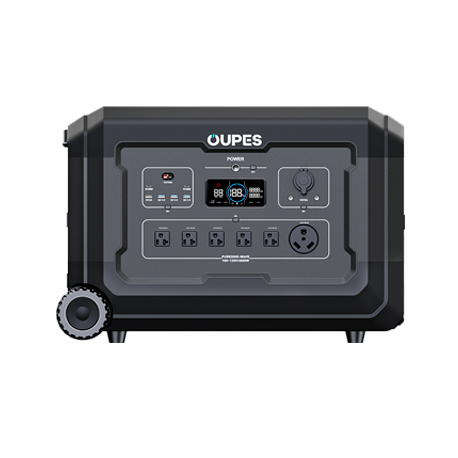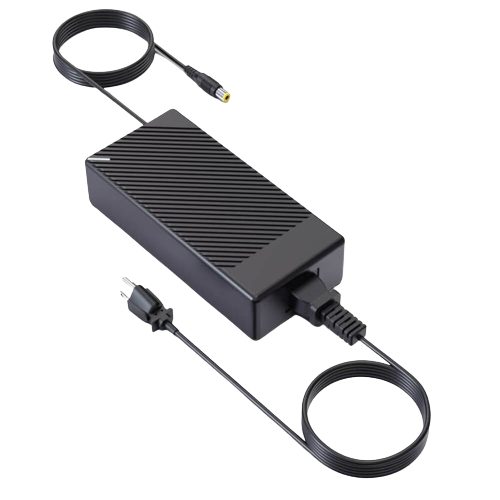LiFePO4 Power Stations vs. Traditional Generators: Why LiFePO4 Power Stations are better for you?
The Evolving Landscape of Backup Power Solutions
In our ever-shifting epoch, where dependence on electrical energy intensifies ceaselessly, the imperative for steadfast auxiliary power solutions, notably LiFePO4 Power Stations, has become strikingly palpable. Interruptions in power supply, spawned by cataclysms, grid malfunctions, or other unforeseen events, can wreak havoc on our daily existence. To combat this predicament, the realm of auxiliary power solutions is undergoing swift metamorphosis, furnishing domiciles with a plethora of alternatives to ponder.
Purpose of the Comparison: Making an Informed Choice
In the midst of this technological metamorphosis, a pivotal inquiry often emerges: Which auxiliary power solution resonates with your individual requirements? Herein lies our detailed juxtaposition of LiFePO4 Power Stations against conventional generators. We recognize that selecting between these two technological paradigms is not invariably a linear decision. It hinges on your distinct necessities, predilections, and the particular scenarios you might confront.
Our objective is unequivocal: to facilitate homeowners in making enlightened choices. By the conclusion of this analytical journey, you will possess an enriched comprehension of both the merits and limitations inherent in LiFePO4 Power Stations and traditional generators. Equipped with this insight, you will find yourself more adept at identifying the auxiliary power solution that harmonizes with your way of life, ethical values, and energy demands. Thus, let us embark on an exploratory odyssey into the realm of backup power and ascertain the route that most aptly resonates with your essence.
 Traditional Generators: The Old Guard
Traditional Generators: The Old Guard
In the landscape of supplementary power solutions, age-old traditional generators have consistently held sway. These mechanisms, available in a variety of incarnations including petrol, diesel, methane, and liquefied petroleum gas forms, offer a broad spectrum of choices. Let's navigate through their advantages and drawbacks:
Pros of Traditional Generators
Unwavering Power Delivery: Celebrated for their robust and steady electricity provision, especially in critical moments, these generators are a testament to reliability. Their capacity to maintain an unbroken flow of energy is a key asset, especially in times of emergency.
Rapid Activation in Power Interruptions: These generators are particularly noted for their ability to quickly come online during electrical failures. They spring to life in a matter of moments, ensuring that key appliances and systems stay operational with the least possible disturbance.
Cons of Conventional Power Generators
Fuel Dependence and Related Expenses: Inextricably linked to combustible fuels like petrol, diesel, natural gas, or propane, these units are chained to limited energy sources. This dependence translates into ongoing fuel costs and a constant need for these resources. Fuel price volatility can heavily sway the operational costs of these generators, a notable concern for operators.
Ecological Impact: A significant downside of traditional generators is their detrimental effect on the environment. Their emissions, contributing to greenhouse gases and air pollution, mark them as less environmentally sustainable. This issue is particularly pressing in an era where consciousness about climate change is rising and the movement towards greener energy solutions is gaining momentum.
Regular Maintenance Necessity: To maintain their operational efficiency and reliability, conventional generators demand consistent upkeep. This includes periodic tasks like oil changes and general servicing to ensure the generators remain in peak working condition. Neglecting these maintenance requirements can lead to decreased functionality or unforeseen operational failures.
LiFePO4 Power Stations: The Future of Backup Power
Understanding LiFePO4 Technology
LiFePO4 energy hubs herald a new epoch in the realm of eco-friendly and sustainable power solutions, standing in stark contrast to their conventional counterparts.
Let us embark on an exploratory journey into the intricate workings and myriad benefits of these LiFePO4 energy hubs.
Advantages of LiFePO4 Power Stations
Eco-Conscious and Hushed Functionality: LiFePO4 Power Stations distinguish themselves through their eco-conscious and hushed functionality. In stark contrast to conventional generators and various other energy sources, these stations operate without generating auditory pollution or deleterious emissions. This attribute is exceedingly beneficial in residential vicinities and for outdoor recreations, underscoring their environmental and societal amicability.
Prolonged Durability: A salient advantage of LiFePO4 batteries is their prolonged durability. Renowned for their robustness and capacity to endure numerous charge-discharge cycles, these power stations eclipse other battery technologies in longevity. This extended lifespan not only curtails the frequency of replacements but also facilitates economic savings in the long run.
Featherweight and Movable: Crafted for movability, LiFePO4 power stations are both featherweight and compact. This design philosophy ensures ease of transportation and deployment in a multitude of settings. Their portability is particularly beneficial for outdoor aficionados, campers, and those requiring auxiliary power in isolated locales. The featherweight characteristic of these stations significantly amplifies their versatility and practicality.
Disadvantages of LiFePO4 Power Stations:
Elevated Initial Expenditure: Despite the long-term economic benefits accrued from their extended lifespan and minimal maintenance, LiFePO4 power stations necessitate a considerable initial outlay. The sophisticated lithium iron phosphate battery technology and its ancillary components are responsible for this heightened initial investment. Nonetheless, this expenditure is frequently offset by the enduring advantages and dependability these power stations provide.
Constrained Energy Output: While LiFePO4 power stations are lauded for their efficiency and sturdiness, they may encounter limitations in energy output. Optimally suited for moderate energy requirements, such as energizing small appliances, laptops, or powering low-wattage devices, they may falter under more demanding energy needs. For tasks necessitating substantial power, like operating heavy machinery or energizing entire residences, LiFePO4 power stations might not be the ideal solution without supplementary units or adaptations.
Is LiFePO4 good for solar?
The Need for Energy Storage in Solar Systems
The Advantages of LiFePO4 Batteries for Solar
-
Elevated Energy Efficacy: LiFePO4 batteries, renowned for their elevated energy efficacy, are adept at conserving and dispensing power with nominal dissipation. This attribute ensures that the electrical output harvested from solar panels is efficiently conserved and employed.
-
Prolonged Durability in Cycles: The cycle durability of LiFePO4 batteries is noteworthy, frequently surpassing 2,000 cycles. This durability is pivotal in solar applications, signifying that the batteries can endure daily charging and discharging sequences for numerous years with minimal wear.
-
Augmented Security Measures: The chemical composition of LiFePO4 is celebrated for its superior safety standards. In contrast to certain other lithium-ion batteries, LiFePO4 variants exhibit a reduced propensity for overheating, thermal escalation, or combustion, thereby enhancing the safety quotient of solar apparatuses.
-
Expansive Operational Temperature Spectrum: LiFePO4 batteries demonstrate efficient operation across a broad spectrum of temperatures, rendering them apt for diverse climatic conditions and meteorological scenarios.
Applications of LiFePO4 Batteries in Solar Energy Systems
Factors to Consider When Using LiFePO4 Batteries in Solar
-
Dimensioning the Energy Repository: It's pivotal to calibrate the LiFePO4 battery reserve precisely, aligning its capacity with the energy yield and demand. A battery reserve that's either too capacious or too limited can impinge on both efficacy and longevity.
-
Synchronicity with Inverters: Ascertain that the inverter in your photovoltaic system harmonizes with LiFePO4 batteries. Certain inverters might necessitate bespoke configurations or specific communicative protocols to attain peak functionality.
-
Stewardship: Albeit LiFePO4 batteries are less demanding in terms of upkeep compared to other battery variants, periodic supervision and intermittent maintenance assessments are recommended to prolong their operational life.
How to Maintain a Solar Generator ?
Regular Cleaning
The cornerstone of sustaining your solar generator's efficacy lies in its consistent purification. Accumulations of grime, foliage remnants, and avian deposits can veil the panels, impeding the ingress of sunlight and diminishing their energy conversion capabilities. Herein are the steps to ensure their immaculate condition:
-
Optical Assessment: Engage in periodic scrutiny of your solar panels to detect any conspicuous accumulations or filth.
-
Delicate Decontamination: Employ a pliant brush, sponge, or an elongated squeegee for the cleansing process. Eschew abrasive materials that might mar the panel's surface.
-
Aqueous Flush: Utilize a hose for dislodging tenacious dirt, ensuring the water is tepid or mirrors the ambient temperature to circumvent thermal shock.
-
Cleansing Agents: In scenarios necessitating it, opt for a benign, non-corrosive cleaning concoction or a blend of water with a modicum of dish detergent. Execute a thorough rinse post-cleansing.
Inspection for Structural Integrity
It's imperative to regularly examine your solar panels and their ancillary components for any indications of physical degradation or wear:
-
Panel Integrity: Search for fissures, chips, or any overt damage to the solar panels. Such impairments can undermine their efficiency.
-
Cable and Wiring Examination: Scrutinize the cables and wiring for any exposed or impaired segments. Compromised cables can precipitate power dissipation or electrical perils.
-
Connection Stability: Ascertain the steadfastness of all electrical connections, including connectors and junction boxes, ensuring they are devoid of corrosion.
Performance Monitoring
Vigilance in monitoring your solar generator's performance is pivotal for early detection of potential malfunctions:
-
Data Analysis: Many solar generators are equipped with integrated monitoring systems that yield data on energy conversion. Utilize these instruments to observe your system's performance chronologically.
-
Energy Yield Comparison: Contrast the actual energy yield of your system with its anticipated output. A marked decline in production could signal an underlying issue.
-
Inverter Check: Ensure the inverter, which is crucial for converting DC electricity from the panels into AC electricity suitable for household use, is functioning correctly.
Battery Upkeep
Should your solar generator encompass a battery for energy reservation, its meticulous maintenance is vital for optimizing its lifespan:
-
Voltage Monitoring: Regularly check the battery's voltage to confirm it aligns with the recommended parameters.
-
Terminal Cleansing: Maintain the battery terminals in a pristine state, devoid of corrosion. Utilize a wire brush or a concoction of baking soda and water for this purpose.
-
Equalization (Conditional): Certain batteries may necessitate intermittent equalization to preserve their capacity. Adhere to the manufacturer's guidelines for this procedure.
Professional Evaluation
Whilst numerous maintenance activities are within your purview, arranging for periodic professional evaluations is prudent:
-
Expert Examination: Contemplate an annual or manufacturer-suggested inspection of your system by a solar technician.
-
Warranty Preservation: Routine professional assessments may be requisite for upholding your system's warranty.
Key Factors for Decision-Making
In the labyrinth of choosing between diverse power backup options, one must ponder over several pivotal elements:
-
Electricity Demand and Utilization Habits Delve into your specific electricity requisites and the manner in which you plan to deploy the backup power source. Ponder whether your necessity is confined to fundamental appliances or if it encompasses a broader spectrum of electrical demands. Comprehending your consumption habits is crucial in selecting a solution that resonates with your power requirements.
-
Fiscal Limitations Monetary aspects wield considerable influence in this selection process. Conventional generators often present a more modest initial outlay compared to LiFePO4 power stations. However, it's imperative to contemplate the cumulative expense of fuel, upkeep, and potential replacements. LiFePO4 power stations, albeit pricier initially, may culminate in long-term savings owing to their extended durability and reduced operational costs.
-
Eco-conscious Deliberations Reflect on your dedication to environmental stewardship. Traditional generators are notorious for their emissions and ecological footprint. Should diminishing your carbon trace and curtailing atmospheric contamination be paramount, LiFePO4 power stations, renowned for their pristine and noiseless operation, might be a more environmentally benign alternative.
-
Transportability and Flexibility Evaluate the necessity for a power source that boasts ease of mobility and setup in varied locales. LiFePO4 power stations, typically characterized by their lightness and portability, are ideal for outdoor escapades, camping, and remote living. Traditional generators, contingent on their magnitude and fuel type, might not offer the same convenience.
-
Duration of Backup Power Necessity Contemplate the expected length of power disruptions you foresee. LiFePO4 power stations excel in shorter to moderate-length outages due to their proficient energy storage capabilities. Traditional generators, provided they have a steady fuel supply, can offer prolonged backup power but might necessitate increased maintenance and fuel reserves.
-
Empirical Narratives and Tangible Illustrations Immerse yourself in the anecdotal experiences of homeowners who have opted for either traditional generators or LiFePO4 power stations as their power backup recourse. Absorbing their direct narratives can furnish invaluable perspectives on the tangible benefits and possible impediments each alternative presents.
Investigate the anecdotal tales of individuals who have selected traditional generators and LiFePO4 power stations, to unearth insights into their journeys and the outcomes thereof.
Maintenance and Long-Term Costs
Scrutinize the sustenance prerequisites and project accumulated expenditures, encompassing fuel, upkeep, and accumulator substitution, to ascertain the comprehensive fiscal ramifications of each alternative.
Considerations for Specific Use Cases
How to choose the right Solar Generator ?
Wrap Up
In essence, the quandary of selecting between Solar Generators and LiFePO4 Power Stations is intrinsically tied to your personal exigencies and predilections. By meticulously scrutinizing the elements underscored in this compendium, you are bestowed with the prerogative to elect a backup power apparatus that impeccably resonates with your lifestyle ethos and mirrors your principled stances. Moreover, your selection contributes to the cultivation of a future that is both more sustainable and resilient.
It is imperative to acknowledge that the realm of Backup Power modalities is undergoing a swift and dynamic transformation. In making your choice presently, you are not merely addressing your proximate energy necessities but are also pledging a long-standing allegiance to your energy autonomy and diminishing your ecological footprint.
This decision wields a profound and enduring impact, not solely on your personal situation but also on the collective endeavor to forge a cleaner, more sustainable energy milieu for posterity. By remaining well-informed and flexible, you can ascertain that your chosen Backup Power Solution stays congruent with both your evolving requisites and the shifting energy paradigm.



























